Why did you get involved with serving nonprofit organizations?
I first got involved by working for one! After the Dobbs Decision and during a career change, I jumped at the opportunity to work for Planned Parenthood of Greater Ohio, helping Ohioans and out-of-state patients access the sexual and reproductive healthcare they deserve. The work is meaningful, and it propelled me to continue in the nonprofit sector, next joining the Opportunity Fund at the American Institutes for Research. There I learned how grantmaking in earnest partnership with those closest to their community’s challenges can yield solutions that create lasting, positive change. Now at Benefactor Group, I get to bring all my experience to help a variety of organizations meet their goals in service of their communities.
Why did you join Benefactor Group?
The people! In the process of interviewing, I learned how Benefactor Group fosters a culture of curiosity, personal growth, and abundance. Even in my first month here, it’s clear I’ve joined a team of dedicated professionals that are passionate about their work and continuous learning. It’s the type of work culture I seek out and I am excited to be a part of it.
What inspires you to serve the common good?
At the most basic level, we’re social creatures that need each other. I strongly believe that living in a community requires us to care for each other—and our collective well-being—because none of us have made it to where we are without acts of generosity along the way. I’m inspired to serve the common good because it keeps me connected to a core truth that our relationships matter most, and that extending your care beyond yourself to recognize and uplift the humanity of others is what makes life meaningful.
We are living in rapidly changing times—which extend to the philanthropic landscape. What gives you hope for the future of philanthropy over the next five years?
The most exciting thing I’m seeing in the philanthropic landscape is the growth of trust-based philanthropy. The approach seeks to rebalance power dynamics between funders and nonprofits, emphasizing multi-year relationship building and mutual accountability instead of control and compliance. The shift creates more opportunities for community input and transparency, which helps critical funding meet real needs. As our world moves faster than ever, I believe strong relationships and flexible funding will help organizations be ready to meet any emergent challenge.
What influences how you give, volunteer, or advocate?
Where can my time and treasure be best used? What unique skills can I contribute in service of others? I’ve been able to use my talents to help adaptive athletes row on the water, organize members of my community, and support candidates in local elections. Where I don’t have specialized skills, I like to give my time, because it can be just as valuable. And even though I don’t have the resources to make a transformational gift, I support the causes I care about through recurring donations. I know that my $10-20 monthly contribution helps an organization’s financial sustainability more than if I were to donate a more significant amount just once.
If you could make a $1 million gift to any organization, where would you direct your contributions and why?
If I had $1 million to give, I would distribute the gift to several organizations that would use the funding in Central Ohio. No matter where you live, you don’t have to look far to find people who could use extra support. It’s important to me to support organizations that help people navigate barriers to care, advocate for our civil rights, and center justice in their work—overall, treating those they serve with compassion and dignity.
The Abortion Fund of Ohio, Ohio Environmental Council, Court-Appointed Special Advocates of Franklin County, Community Refugee & Immigration Services Ohio, and the ACLU of Ohio would be some of the first organizations I would fund.
Where can someone find you when you’re not at work?
When I’m not at work, you can find me in the ceramics studio at the Columbus Cultural Arts Center, taking a walk around my neighborhood park, perusing a secondhand store, or reading on my patio.
What are you currently reading, or what do you recommend?
The last book I finished was The Serviceberry: Abundance and Reciprocity in the Natural World by Robin Wall Kimmerer. I would recommend her other books—Braiding Sweetgrass and Gathering Moss—as well. Kimmerer is a botanist, and her books blend Western scientific training with Indigenous ways of knowing. Her work illustrates that reciprocity abounds in our ecosystems, and that sharing is indeed a survival skill.
I would also recommend The Injustice of Place: Uncovering the Legacy of Poverty in America by Kathryn Edin. Over five years, the authors traveled to the places of deepest poverty in the United States to trace the legacy of extractive policies that have shaped people’s health, livelihoods, and economic opportunities. Research-driven, this book lays out the factors that fuel inequality and where there is specific action needed to improve the well-being of those in deepest need.





